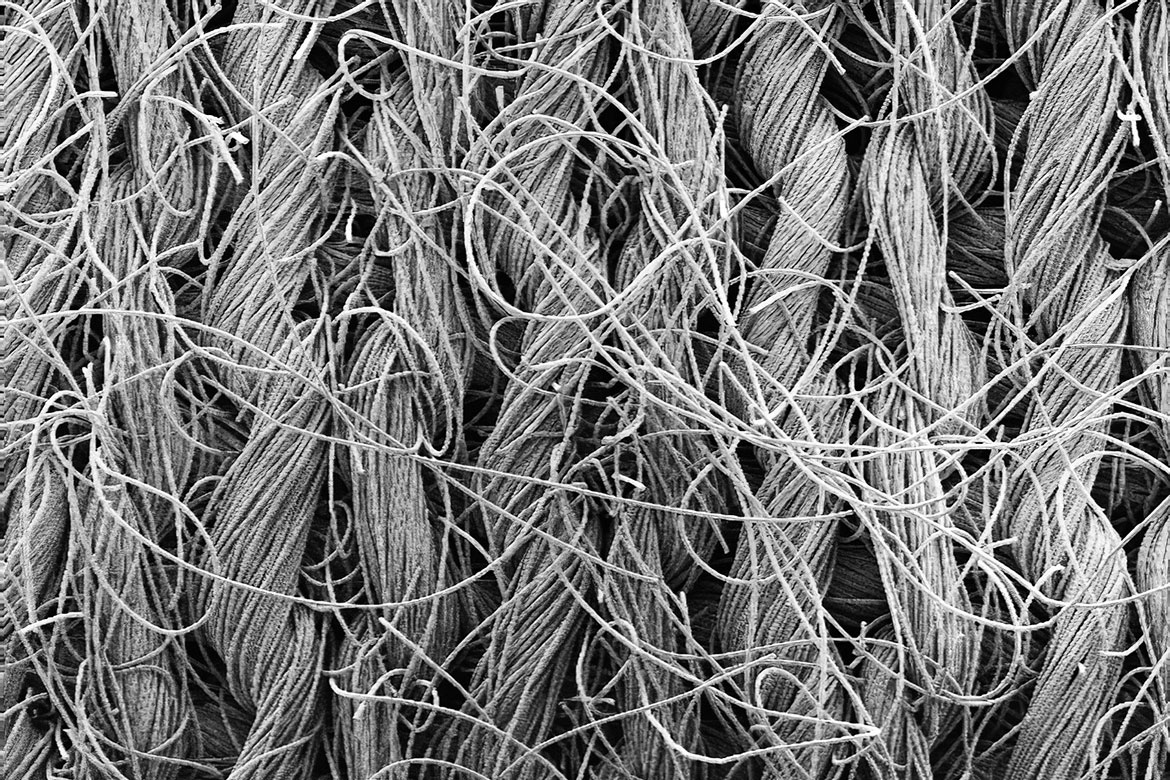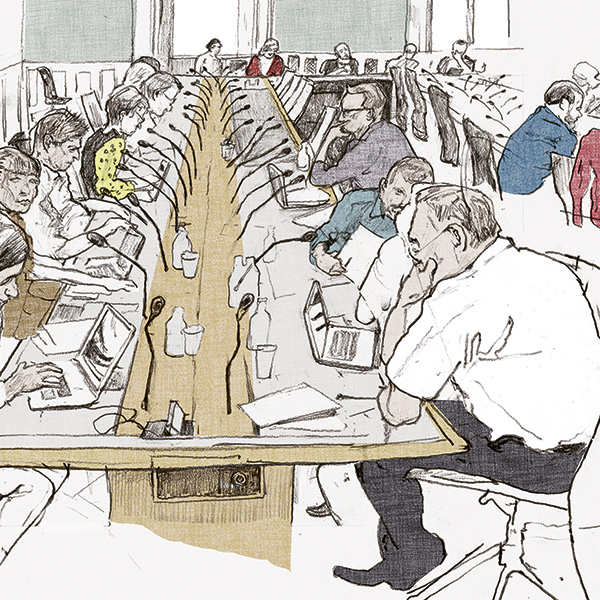MICROPLASTICS
Washing releases microplastics
Cutting and pre-treating synthetic textiles creates many loose polyester fibres. Washing the textiles releases them into the environment.

Polyester threads in an interlock fabric, seen through an electron microscope. | Image: Y. Cai et al (2020)
Little is known about the origin and impact of so-called microplastics in our water – particles less than five millimetres in size. Although sewage treatment plants manage to eliminate a large proportion of these plastic particles and fibres from our wastewater, overall they still enter the environment in considerable quantities. Clothes made of polyester make up some 90 percent of all synthetic textiles, and they constitute a significant source of microplastics in the environment. Two studies by the Swiss Federal Laboratories for Materials Science and Technology (Empa) have now shown which textiles and production processes are most responsible for releasing large amounts of plastic fibres when washed.
The researchers carried out washing procedures under controlled conditions, and then used a simple image analysis to assess the number of microfibres released. The results showed that washing is not the main problem. Most of the plastic fibres released had already been present in the textiles since they were manufactured. Clothes from textiles that are processed mechanically and are cut with knives release up to 50 times more fibres than textiles that undergo less processing, and which are cut by lasers instead. “Many of the fibres also come from the edges of the textiles”, says Bernd Nowack, the head of the study. “If these edges are heat-sealed, they release up to 20 times fewer fibres”. Washing the textiles before they are sold could also have a big impact.
So-called microfibre cloths for household use are the biggest source of fibres. Fleeces also release a lot of microplastics when their fibres are napped so as to make the textile feel softer. A follow-up study is now planned to determine whether wear and tear means these textiles keep releasing plastic fibres each time they are washed.
But the problem can’t be solved by replacing these plastic fibres with natural products. This is because cultivating natural fibres such as cotton consumes a large quantity of water and pesticides, which in turn often leaves a negative environmental footprint.




